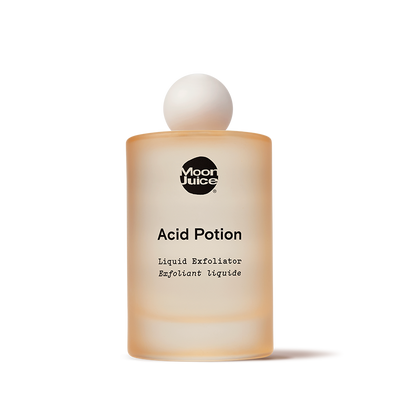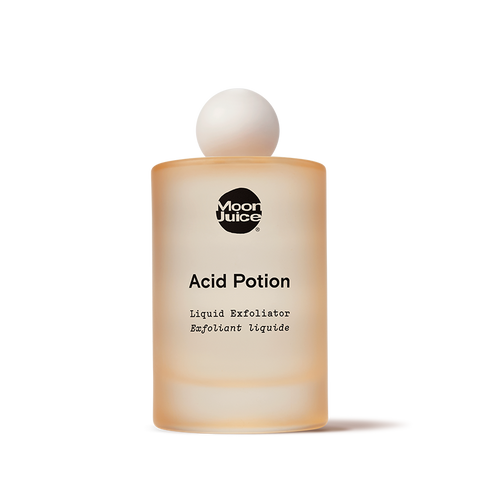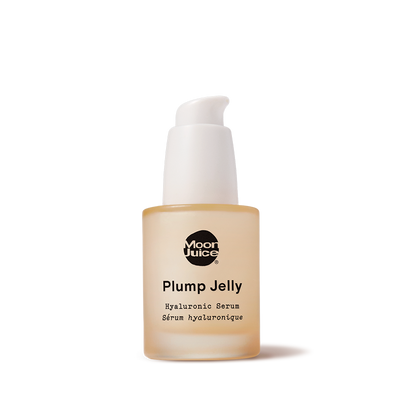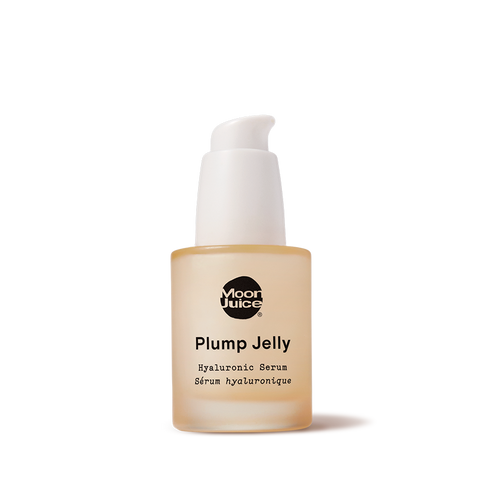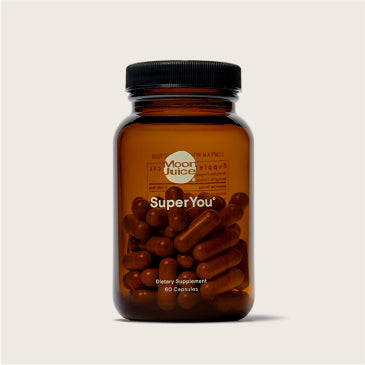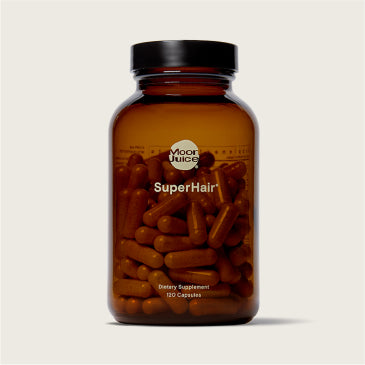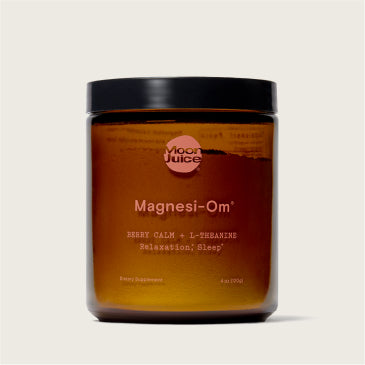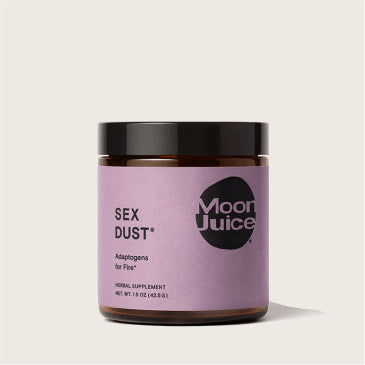Acids have been used for decades to chemically exfoliate the skin and enhance its appearance, but with so many acids to choose from, it can be overwhelming to know which acid to use for your unique skin concern. Two of the most common exfoliating acids you’ll see in skin care products are Glycolic Acid and Salicylic Acid. While both of these acids are powerful, their benefits are quite different. Get clarity on the key differences between Glycolic Acid vs. Salicylic Acid and find out how they can work together for your skin’s benefit.
What is Glycolic Acid?
Glycolic Acid is a type of Alpha Hydroxy Acid (AHA) that helps break down the water bonds between dead and healthy cells and supports collagen production. While cell turn over slows with time, AHA exfoliants, like Glycolic Acid, can speed up the process with its small molecules that seep into the skin's surface layer, gently stimulating the shedding of old, damaged cells. By sloughing off unhealthy cells, new skin cells can surface with a naturally even tone and texture.
Research studies show Glycolic Acid has the ability to increase and retain barrier hydration while improving skin’s resilience to environmental stress thanks to its antioxidant effects.
As Glycolic Acid removes surface-level gunk, other skin care products can penetrate deeper into the skin’s surface.
Benefits of Glycolic Acid
Glycolic Acid supports the skin in numerous ways, here’s how:
- Helps cell turnover
- Promotes collagen production
- Increases hydration of cells
- Reduces appearance of fine lines
- Helps balance skin tone
If you experience skin sensitivity or are frequently in the sun, incorporate Glycolic Acid (or any other AHA exfoliator) slowly and strategically. Integrate this acid into your skin care routine gradually to allow skin time to adapt. Because Glycolic Acid can make skin more photo-sensitive, use it at night and protect your skin the following day with mineral sunscreen.
What is Salicylic Acid?
Salicylic Acid is a type of Beta Hydroxy Acid (BHA) that dissolves dead skin cells and oil on the skin’s surface, while unclogging and reducing the appearance of pores for smoother-looking skin. Research shows Salicylic Acid’s oil soluble molecules can gently loosen dirt and penetrate pores to improve the skin’s surface and balance a blemish-prone biome. Salicylic Acid cleans and primes pores so additional skin care products can work harder against pesky skin conditions.
Benefits of Salicylic Acid
Salicylic Acid helps the skin in a range of ways. Here’s how:
- Dissolves dead skin
- Unclogs pores
- Helps balance excess oil
- Reduces appearance of pores
- Helps smooth skin texture
Salicylic Acid and other BHAs do not make skin photo-sensitive, but you should still integrate it into your skin care routine slowly to give your skin time to get used to this new ingredient. If you experience skin sensitivity, be careful to not overwhelm it with overuse of acid exfoliators.
Key Differences Between Glycolic and Salicylic Acid
To clear up the debate on Glycolic Acid vs. Salicylic Acid, we must acknowledge the differences. The truth is, there is no one “right” acid for everyone. Both AHA and BHA exfoliators support optimal skin health. To find out which acid is right for you, look at the current health of your skin and take into consideration any concerns or skin conditions.
- Glycolic Acid is water soluble while Salicylic Acid is oil soluble.
- Glycolic Acid works on the surface of skin while Salicylic penetrates deeper layers.
- Glycolic Acid removes dead skin while Salicylic Acid dissolves stuck dirt and oil.
- Glycolic Acid is barrier hydrating while Salicylic Acid is biome balancing.
- Glycolic Acid can make skin temporarily photo-sensitive while Salicylic Acid is sun-safe.
Clearly, these acids have their own strengths. To determine which acid may work best for your skin situation, let’s dive further:
Glycolic Acid is right for you if you are experiencing:
- Dry spots
- Lines and wrinkles
- Sun damage
- Uneven skin tone
Consistent use of Glycolic Acid can increase barrier hydration and regenerate levels of collagen and elastin, making this ingredient great if you are struggling with stressed out skin. Signs of skin stress may show up as dryness, premature lines, hyperpigmentation, photo-sensitivity, and unevenness. Glycolic Acid can help resurface skin, making it more plump and hydrated.
Salicylic Acid is right for you if you are experiencing:
- Dead skin
- Excess oil
- Enlarged pores
- Blemishes
- Rough skin texture
Incorporating Salicylic Acid into your skin care can help smooth and balance your complexion by penetrating deep below the surface. If your skin is rough, bumpy, or overly oily, this acid can help rebalance the biome and resolve barrier based issues.
Can I Use Glycolic Acid and Salicylic Acid Together?
Hydroxy Acids have been safely used for skin care purposes for over 40 years, with Glycolic Acid and Salicylic Acid being consistently proven to work well together. Combining the unique strengths of these acids creates a well rounded approach to chemical exfoliation. For convenience, look for a liquid exfoliant that includes both AHA and BHA.
Benefits of Combining Glycolic Acid and Salicylic Acid
There are a range of benefits that come with combining Glycolic and Salicylic Acids. By incorporating both ingredients into your skin care routine, you can target multiple issues and experience the effects of both acids simultaneously. Clinical research shows these ingredients, when together, can safely reverse photoaging, improve numerous skin concerns, and enhance skin’s appearance.
In a study of participants who used a combination of Glycolic Acid and Salicylic Acid, 70-80% of people reported a decrease in oiliness, even texture, and smoother looking skin.
An additional study found these Hydroxy Acids to be antioxidative and barrier strengthening.
For a potent 25% AHA + BHA complex, Moon Juice’s Acid Potion is the perfect elixir. This liquid exfoliant uses several powerhouse ingredients to keep your skin looking its best. Glycolic Acid is used to break down dead cells and help stimulate collagen production. Lactic Acid helps encourage cellular turnover, while the Salicylic Acid (derived from Willow Bark) penetrates deep into the skin and unclog pores. Plus, Niacinamide (B3) and adaptogenic Reishi are added to hydrate and restore the skin’s barrier while also soothing irritation. When you learn how to use this liquid exfoliant, you can achieve incredible results for your skin.
Sign Up, Nerd Out
Get wellness tips, education, and recipes
delivered straight to your inbox.
Get wellness tips, education,
and recipes delivered
straight to your inbox.
Considerations for Using Glycolic Acid and Salicylic Acid Together
There are a few things to consider before using Glycolic Acid and Salicylic Acid together:
Differences in PH Levels and Acid Concentrations
Because acids have a low pH, it’s important to support the health of your skin by using other natural skin care products. And keep in mind, not all chemical exfoliants for the face are the same and range in acid strength, so check the product label for its acid concentration.
Potential Risks or Side Effects of Combining the Two Acids
Acids are potent. If used too often, AHAs and BHAs can overwhelm the skin and cause signs of stress (like burning, redness, itchiness, and dryness). If you use an AHA + BHA complex, remember to apply it in the PM since AHA can make skin photosensitive.
Factors to Consider Based on Skin Type and Sensitivity
Skin that is currently sensitive or inflamed should use both acids sparingly and focus on building barrier and biome health with nourishing skin care products. Be sure to also properly hydrate the skin with a natural moisturizer that is safe for sensitive skin.
Tips for Safely Using Glycolic Acid and Salicylic Acid Together
When adding any new skin care product into your existing routine, ease into it. Glycolic Acid and Salicylic Acid are powerful ingredients and your skin will need time to adjust. Patch test the chemical exfoliant before making it a skin staple and use Glycolic Acid and Salicylic Acid together up to 3 times a week for deep exfoliation.
Takeaways
Glycolic Acid and Salicylic Acid offer distinct benefits for the skin, with Glycolic Acid focusing on surface exfoliation and hydration, and Salicylic Acid targeting deeper pore cleansing and oil balance. Understanding the differences between Glycolic Acid vs Salicylic Acid is crucial in choosing the right acid for your specific skin concerns. While they can be used together for a comprehensive type of exfoliation, it is important to consider pH levels, acid concentrations, and individual skin sensitivity. With proper precautions and gradual integration, the combination of Glycolic Acid and Salicylic Acid can provide a powerful opportunity to address various skin issues and enhance overall appearance.
Sources
- National Library of Medicine, Cosmetic use of alpha-hydroxy acids https://pubmed.ncbi.nlm.nih.gov/9188214/
- Derm Net, Glycolic acid peel therapy – a current review https://www.ncbi.nlm.nih.gov/pmc/articles/PMC3875240/
- Derm Net, Alpha hydroxy acid facial treatments https://dermnetnz.org/topics/alpha-hydroxy-acid-facial-treatments
- National Library of Medicine, Salicylic acid as a peeling agent: a comprehensive review https://www.ncbi.nlm.nih.gov/pmc/articles/PMC4554394/
- Derm Net, Salicylic acid https://dermnetnz.org/topics/salicylic-acid
- National Library of Medicine, Two is better than one: The combined effects of glycolic acid and salicylic acid on acne-related disorders https://pubmed.ncbi.nlm.nih.gov/32250551/
- National Library of Medicine, Hydroxy Acids, the Most Widely Used Anti-aging Agents https://www.ncbi.nlm.nih.gov/pmc/articles/PMC3941867/
- Skincare Bootcamp: The Evolving Role of Skincare, National Library of Medicine https://www.ncbi.nlm.nih.gov/pmc/articles/PMC5172479/
- Clinical and cosmeceutical uses of hydroxyacids, National Library of Medicine https://pubmed.ncbi.nlm.nih.gov/19695482/
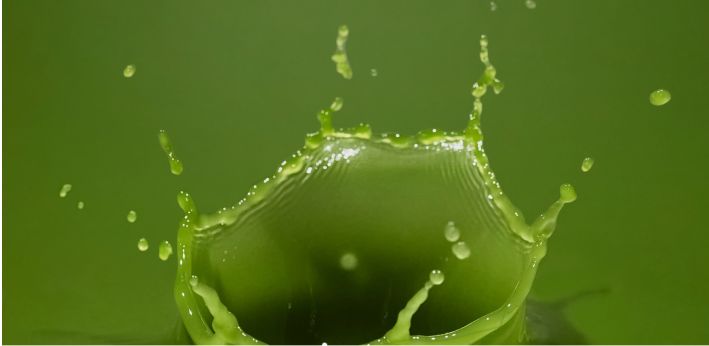
-(1).png?v=1689816808808)
.png?v=1689816820276)
